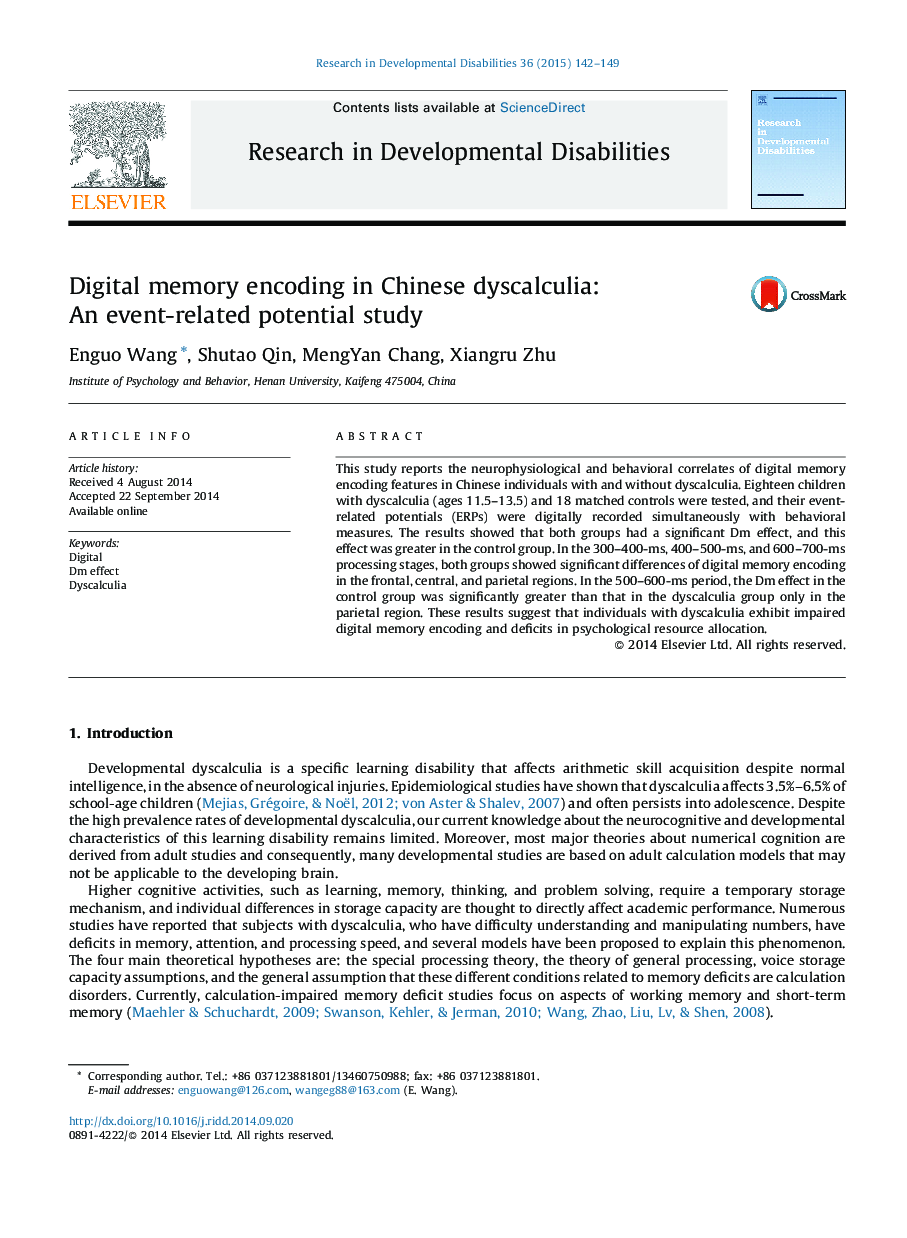| Article ID | Journal | Published Year | Pages | File Type |
|---|---|---|---|---|
| 6848614 | Research in Developmental Disabilities | 2015 | 8 Pages |
Abstract
This study reports the neurophysiological and behavioral correlates of digital memory encoding features in Chinese individuals with and without dyscalculia. Eighteen children with dyscalculia (ages 11.5-13.5) and 18 matched controls were tested, and their event-related potentials (ERPs) were digitally recorded simultaneously with behavioral measures. The results showed that both groups had a significant Dm effect, and this effect was greater in the control group. In the 300-400-ms, 400-500-ms, and 600-700-ms processing stages, both groups showed significant differences of digital memory encoding in the frontal, central, and parietal regions. In the 500-600-ms period, the Dm effect in the control group was significantly greater than that in the dyscalculia group only in the parietal region. These results suggest that individuals with dyscalculia exhibit impaired digital memory encoding and deficits in psychological resource allocation.
Keywords
Related Topics
Life Sciences
Neuroscience
Behavioral Neuroscience
Authors
Enguo Wang, Shutao Qin, MengYan Chang, Xiangru Zhu,
